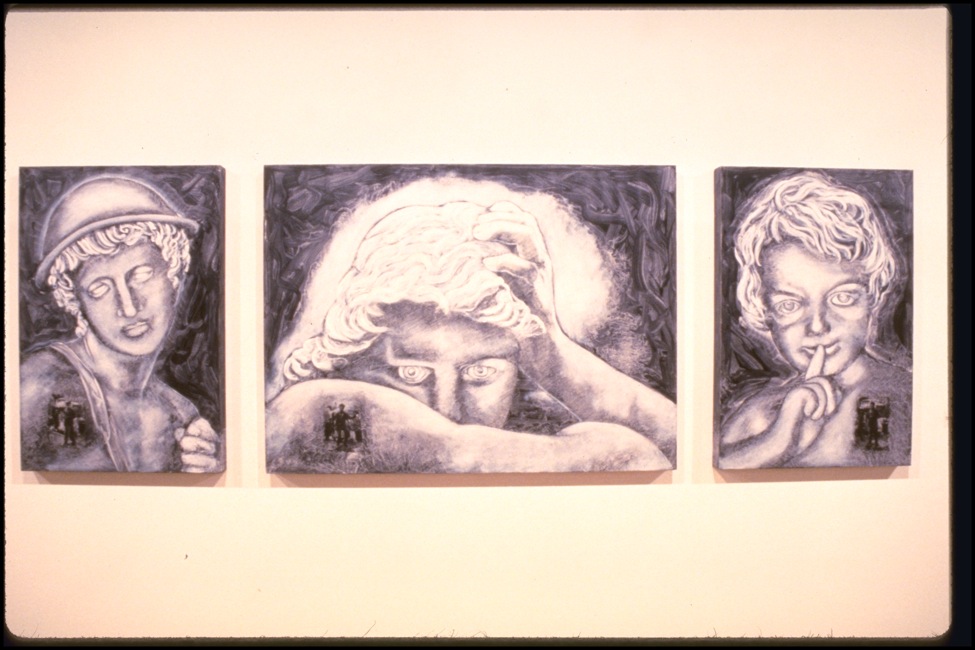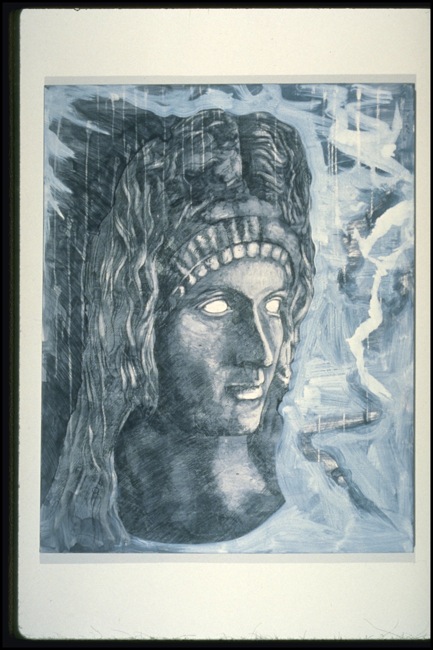Tim Wride Essay for Edge of Time
 We are a culture that seeks to elevate, exalt, and celebrate personalities and figures whose achievements we admire, whose talents we value, or whose attributes we hold dear. Awards are given, titles conferred, honors bestowed on military and political figures, intellectual and cultural luminaries, or increasingly upon those whose sole accomplishment is celebrity itself. The creation of such a group, a pantheon, is both culturally and temporally specific. We create and amend these pantheons to suit shifting criteria based on impermanent collective needs, desires, and tastes that change over time and vary between cultures and socio-economic classes. To look at the individuals who are granted inclusion in such a group, therefore, provides as much information about those doing the selecting as it does about those selected.
We are a culture that seeks to elevate, exalt, and celebrate personalities and figures whose achievements we admire, whose talents we value, or whose attributes we hold dear. Awards are given, titles conferred, honors bestowed on military and political figures, intellectual and cultural luminaries, or increasingly upon those whose sole accomplishment is celebrity itself. The creation of such a group, a pantheon, is both culturally and temporally specific. We create and amend these pantheons to suit shifting criteria based on impermanent collective needs, desires, and tastes that change over time and vary between cultures and socio-economic classes. To look at the individuals who are granted inclusion in such a group, therefore, provides as much information about those doing the selecting as it does about those selected.
Throughout his career as an artist, Clayton Campbell has embraced his role as a mediator. He facilitates the visual, conceptual and psychic interaction between his work and the viewer that is bound within his creative process. For over two decades, he has documented in photographs and sketches an array of people and objects to which he felt a common psychic and spiritual resonance. More recently he has reinterpreted these initial “notes” as painted panels and installations. Through this process he has created a pantheon unconstrained by cultural, temporal, or political boundaries. Clayton’s selection recognizes as its sole organizing principal his personal understanding of and unique sensitivity to the animistic presence of his subjects.
Clayton’s Pantheon is monolithic only in so far as the scale and monochromatic appearance of each image references commemorative architectural and art historical elements. Their formality is purposefully and expressively subverted by the aggressive underpainting that dominates the finished works and personalized through his use of a spontaneous calligraphic ground within which the effigies maintain a precarious balance. His subjects are further democratized by their common tonality. In the collective, they are part hagiography, part Rorsarch test, and part family album. Singularly they recall personal moments of recognition, animistic connection, and psychic celebration.
Clayton’s spiritual connection to the fragmented studies in his Pantheon engenders a subsequent meditation and re-connection on the part of the viewer—our part.
He does not want us merely to observe his process and perhaps tap into his psycho-spiritual journey. Rather, he provides the space wherein we can tap into our own. The grid format of the installation demands our attention. The anxious interstices between images crackle with an energy that invites comparison, fosters reflection, and forges connections. The synaptic space between the effigies and us is bridged with a tactile energy that bristles with visual tension and conceptual possibilities. Emotional and psychological connections congeal around the historical, cultural, visual, and visceral layers we project onto the effigies. The environment is energized by the interaction. And in an unguarded moment–an apocryphal instant–the visual, psychological and spiritual ethic from which Clayton’s work was born becomes encompassing and we, too, become part of the pantheon.
Tim Wride
Associate Curator of Photography
Los Angeles County Museum of Art

































